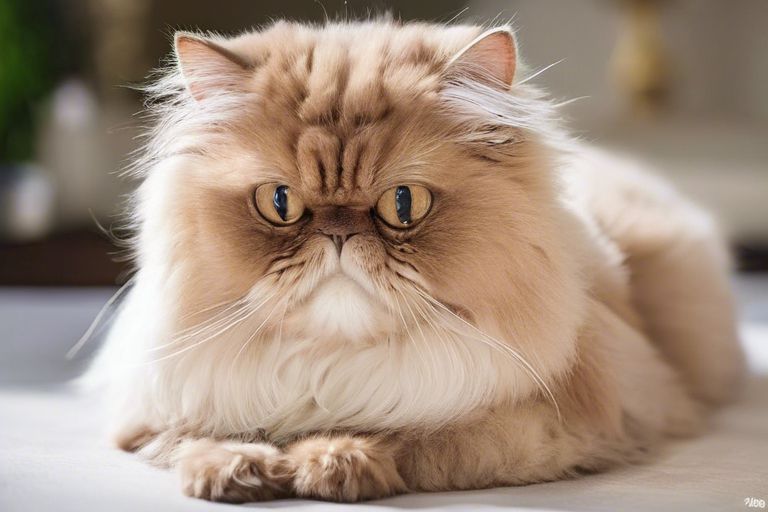Introduction
Feeding our feline friends a proper diet is essential for their overall health and well-being. When it comes to Persian cats, it’s important to provide them with a nutritionally balanced diet that meets their specific dietary needs. One option that has gained popularity among cat owners is a raw meat diet. In this comprehensive guide, we will explore the benefits, considerations, and guidelines for feeding Persian cats a raw meat diet.
Understanding the Raw Meat Diet
What is a Raw Meat Diet?
A raw meat diet for cats involves feeding them uncooked, human-grade meat instead of traditional commercial cat food. Proponents of this diet believe that it closely mimics the natural diet of wild cats and provides numerous health benefits. Raw meat diets typically consist of a variety of protein sources, such as chicken, turkey, beef, and fish.
Benefits of a Raw Meat Diet
Advocates of the raw meat diet for Persian cats claim several benefits associated with this feeding approach. These include:
- Nutritional Content: Raw meat retains its natural nutrients and enzymes, which can be lost during the cooking process of commercial cat food.
- Improved Coat and Skin: Many cat owners report that their Persian cats have healthier skin and a shinier coat after switching to a raw meat diet.
- Reduced Allergies: Some cats with food allergies or sensitivities may experience relief when switched to a raw meat diet, as it eliminates common allergens found in commercial cat food.
- Healthy Teeth and Gums: Chewing on raw meat and bones can help maintain dental health in cats by reducing plaque and tartar buildup.
- Digestive Health: Cats on a raw meat diet often have improved digestion and smaller, less odorous stools.

Considerations for Feeding Raw Meat to Persian Cats
While the raw meat diet offers potential benefits, there are several important considerations to keep in mind when feeding Persian cats raw meat:
- Quality and Safety: It is crucial to source high-quality, human-grade meat to ensure it is free from contaminants and pathogens. Avoid using meat that is near its expiration date or has been processed with seasonings or additives.
- Preparation and Handling: Raw meat should be prepared separately from your own food, using clean utensils and surfaces to prevent cross-contamination. It is also essential to handle raw meat with proper hygiene practices to minimize the risk of bacterial contamination.
- Nutritional Balance: A raw meat diet should be nutritionally balanced to meet the specific dietary needs of Persian cats. Consult with a veterinarian or a feline nutritionist to develop a balanced feeding plan that includes all essential nutrients.
- Supplements: Depending on the variety of meats used, it may be necessary to supplement the raw meat diet with additional vitamins and minerals to ensure cats receive all necessary nutrients.
- Transitioning: Cats should be gradually transitioned to a raw meat diet to allow their digestive systems to adapt. Sudden diet changes can cause gastrointestinal upset. Start by mixing a small amount of raw meat with their regular food and slowly increase the proportion of raw meat over time.
Implementing a Raw Meat Diet for Persian Cats
Step-by-Step Guide to Feeding Raw Meat
- Choose High-Quality Meat: Select fresh, human-grade meat from reputable sources. Look for meats that are free from additives, preservatives, and antibiotics.
- Prepare the Meat: Remove any bones and excess fat from the meat. Cut it into small, bite-sized pieces that are easy for your Persian cat to chew and digest.
- Variety is Key: Rotate between different protein sources, such as chicken, turkey, beef, and fish, to provide a diverse range of nutrients.
- Consider Mixing: Some cat owners prefer to mix raw meat with other ingredients, such as boiled vegetables or liquid vitamins, to ensure a well-rounded diet.
- Monitor Freshness: Only serve fresh raw meat to your Persian cat. Avoid leaving raw meat out for extended periods and discard any uneaten portions after a reasonable time to prevent bacterial growth.
- Cleaning and Hygiene: Clean all utensils, surfaces, and feeding dishes thoroughly after handling raw meat to prevent the spread of bacteria. Consider using disposable paper plates for easy cleanup.
- Consult with a Veterinarian: Regularly consult with a veterinarian to monitor your Persian cat’s health and ensure they are receiving all necessary nutrients through their raw meat diet.
Commercial Alternatives
If preparing a raw meat diet from scratch seems overwhelming or time-consuming, there are commercial raw food options available. Look for reputable brands that offer balanced raw food specifically formulated for cats. These products often come in freeze-dried or dehydrated forms, making them convenient to feed while still providing the benefits of a raw meat diet.
Conclusion
Feeding Persian cats a raw meat diet can provide numerous health benefits and meet their specific dietary needs. However, it is essential to consider the quality and safety of the meat, as well as ensure a nutritionally balanced diet. Implementing a raw meat diet requires careful preparation, handling, and monitoring. Consulting with a veterinarian is crucial to develop a feeding plan that suits your Persian cat’s individual needs. With proper attention to detail, a raw meat diet can contribute to the overall health and well-being of your beloved Persian cat.
Remember, the primary goal is to provide the best nutrition possible for your Persian cat, so whether you choose to feed a raw meat diet or stick with a commercially available cat food, always prioritize their health and consult with professionals to make informed decisions.





